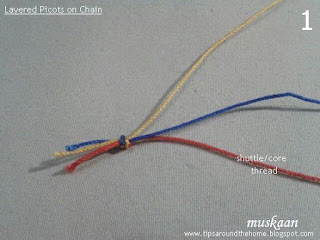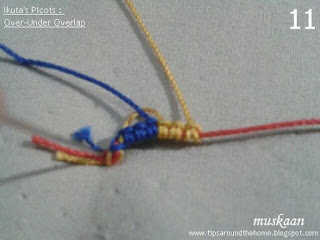I didn't want to enter the kitchen so soon ! But a tummy needs what a tummy needs, no matter sun or rain, muggy or cold. There's no grumbling with rumbling. Leftovers, you say ? Yes, of course, but one still has to make something in order for there to be leftovers, right ?
And one doesn't want to get one's pretty dress dirty in the process !
So off I crawled to the kitchen, .... taking a little detour through time and the sewing room.
And one doesn't want to get one's pretty dress dirty in the process !
So off I crawled to the kitchen, .... taking a little detour through time and the sewing room.
'Make something' first !
Stepping back a couple of years.... My MIL needed
nightwear ASAP due to an emergency hospitalization leading to a long
recovery/rehabilitation thereafter. Luckily I had recently bought a lot of cotton fabric for both of us and could sew them out quickly.
Here is one such, a hand-block printed Bagru cotton :
There was no time for anything fancy ...
There was no time for anything fancy ...
But still too simple, so I rummaged through my frugal button stash and found some matching buttons to put along the front
… (these buttons were left over from a 2nd birthday dress I had sewn for my niece).
And the sleeve, though not clearly visible, has an open
box-pleat at the base and a minimal puff at shoulder.
One of the advantages of sewing oneself, is you get to keep
all the leftover fabric pieces :-D
There
was a decent-sized rectangular piece that could be used for an apron, since it
was pure cotton.
Tropical weather can be quite hot & humid as we approach
monsoons, and add to that the heat in the kitchen. Even the thin apron strap
round the neck can cause discomfort & perspiration ! I have been looking
for apron patterns that circumvent the neck strap/string & saved a few on my
DIY-Sewing board.
Despite the lovely ideas, they all had a kind of skirt
around the waist, and wider straps behind needing much more fabric than I had
or wished to use. These projects gave me a very good idea but customization was
called for.
Firstly, I had only about 35”x 22” (plus enough seam allowances all around) of this material. Plenty
for a straight-cut apron; not enough for pleats and skirts.
Secondly, the fabric suddenly seemed a bit thin for a durable
apron; not enough body.
Rummaged through my fabric stash & found this plain blue
fabric.
A double-sided/reversible
apron ?
Yes ! Keeps the boredom away ;-D
How to adorn ?
Tatting …
Another rummage, this time through my tatting stash.
I had 30 blue & white motifs in 3 sizes which had been
sewn on to a blue silk sari & gifted to my MIL in 2000. Unfortunately, the
sari colour ran & the white turned pale, spotted blue :-( Eventually she removed & returned the
motifs, knowing I would put them to some sort of use, & wore the sari
plain.
Perfect for this fabric print & colour ! Picked the ones
where the white thread was more evenly ‘dyed’.
The pattern is from the only tatting book I had for decades
(gift from a dear friend) “Tatting Favourites” from Anchor Design
Center
…. and Painting !
My idea was to do some freestyle monotone fabric painting on
the plain blue side. That was the reason I used dark blue sewing thread on the
light blue fabric. But practicality ruled. See, once the front is ironed, it will
leave an ‘imprint’ on the back; so it would not really be a reversible apron.
The blue would just have to settle for being a lining.
How to strap it on ?
Still strapped with the neck 'strap' problem….
I couldn’t decide whether the strings should go straight down
the back or make a cross. This led to difficulty in estimating their length and position (one should have a mannequin or a live model!). Hmm, as I write this, it occurs to me that I could've used crocodile clips to estimate !!!
So the decision was postponed – 4 strips were sewn – 2
on top & 2 for the belt.
Meanwhile the remaining sewing, including hand-hemming the
bottom seam was completed.
I was still lost, and the last day of May to post the
pinterest challenge was fast approaching… take a deep breath and Think girl !!!
Rummaged through my meagre leftover neural stash .... andEureka
!
Rummaged through my meagre leftover neural stash .... and
Adjustable strings !!!
Rummaged through my closet & cut out an old beige bra
& removed the ahem “bra strap adjustment slide rings” – quite a mouthful (hmmm,
didn’t know the term, but Google always obliges).
Once I saw that it would work, I cut out another black one for black rings.
One ring went into each belt, and the rings for adjustment went on each
shoulder strip.
The adjustable segment was hand-sewn.
The belt rings are free-sliding at present, leaving me the option of wearing the strings straight or across my back. The final tacking down of the rings on the belt will have to wait till I wear the apron for a bit & adjust to comfort.
Once I saw that it would work, I cut out another black one for black rings.
The adjustable segment was hand-sewn.
The belt rings are free-sliding at present, leaving me the option of wearing the strings straight or across my back. The final tacking down of the rings on the belt will have to wait till I wear the apron for a bit & adjust to comfort.
That’s my challenge completed & solved to my liking, literally using
leftovers – quite a cover-up!
Aren’t you just curious to see what the other pin chicks are
up to? I am.
Let's visit them and check out their immense creativity at



























































